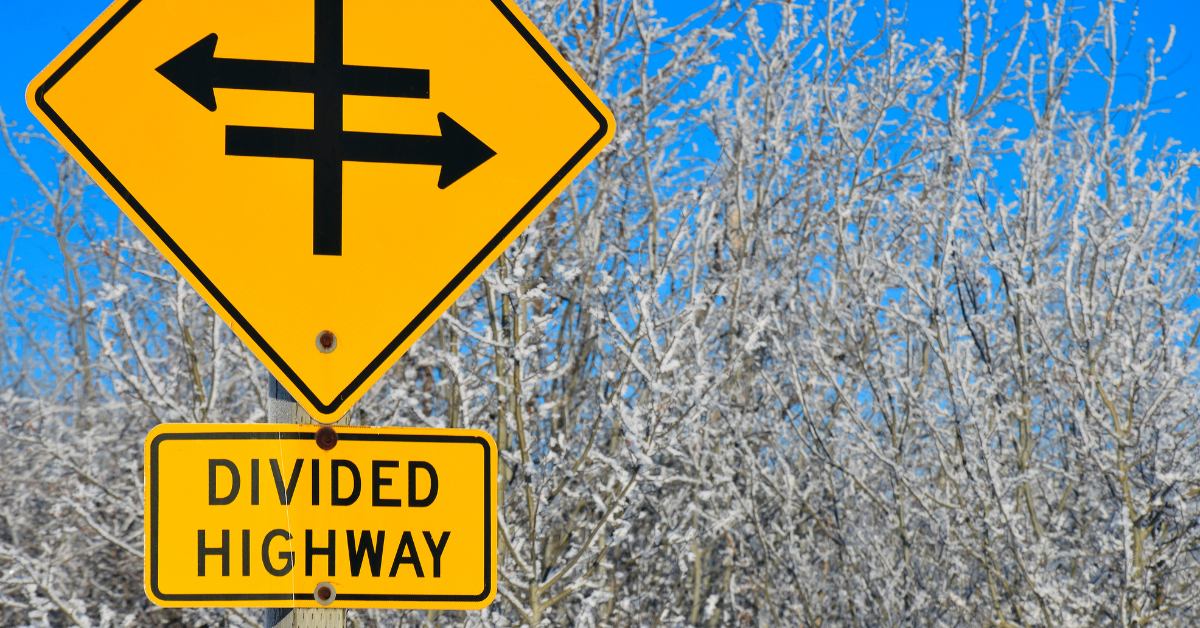Imagine you’re driving on a busy road, traffic whizzing by in both directions. Suddenly, a car swerves into your lane from the opposite side, and you barely avoid a head-on collision. This scenario is terrifying but, fortunately, less likely to happen on divided highways. In this article, we’ll explore what divided highways are, their benefits, the types of medians they use, and important driving tips to keep you safe.
By understanding these aspects, you’ll appreciate how divided highways contribute to safer and more efficient travel.
What is a divided highway in America?
A divided highway is a road designed with a physical barrier separating lanes of traffic moving in opposite directions. This barrier can take various forms, such as a median strip of land, a concrete wall, or a guardrail. The primary purpose of these barriers is to prevent vehicles from crossing into oncoming traffic, significantly reducing the risk of head-on collisions.
The median strip or barrier not only separates the lanes but also provides a buffer zone, enhancing overall road safety. This design is commonly seen on major highways and interstates, where traffic volumes are high and speeds are faster. By physically separating the lanes, divided highways create a safer driving environment, which is crucial for both everyday commutes and long-distance travel.
Also Read
Divided highways can vary in their complexity. Some feature simple grassy medians, while others include elaborate systems of guardrails or concrete walls. Regardless of the type, the core concept remains the same: to keep opposing streams of traffic apart, thus minimizing the chance of collisions and enhancing overall road safety.
How does a divided highway differ from an expressway?
Divided highways and expressways share some similarities, but a key distinction lies in their access control. Here’s a breakdown of the differences:
- Divided Highway:
- Access: Divided highways can have various access points, including traffic lights, intersections, and merging lanes. This allows for easier access to and from properties along the road.
- Speed Limits: Speed limits on divided highways can vary depending on the specific road and location, but they are generally lower than expressways.
- Examples: Many state and federal highways in the US are divided highways.
- Expressway:
- Access: Expressways have limited access, meaning they have controlled entry and exit points typically via ramps. This reduces traffic interruptions and allows for higher speeds.
- Speed Limits: Expressways generally have higher speed limits than divided highways due to the limited access points.
- Examples: Interstate highways in the US and some major state highways with controlled access are considered expressways.
In simpler terms:
Think of a divided highway as a regular road with a median separating opposing traffic. It offers more access points but may have lower speed limits due to increased traffic interaction. Imagine an expressway as a high-speed road with controlled access. It prioritizes faster travel with fewer interruptions but has limited entry and exit points.
Remember: Not all divided highways are expressways, but all expressways are divided highways by nature.
Benefits of Divided Highways
One of the most significant benefits of divided highways is the reduction in head-on collisions. Head-on crashes are among the most dangerous types of accidents due to the high-impact forces involved. The median strip effectively reduces the likelihood of such collisions by preventing vehicles from straying into oncoming lanes. This makes divided highways inherently safer compared to undivided roads.
Improved traffic flow is another major advantage. Divided highways typically have multiple lanes in each direction, allowing for smoother traffic movement. This design minimizes congestion, as faster-moving vehicles can overtake slower ones without causing delays. The separation of lanes also means that traffic incidents in one direction are less likely to affect the flow in the opposite direction, ensuring a more consistent driving experience.
Enhanced safety for maneuvers such as turning and merging is yet another benefit. With a physical barrier between opposing lanes, drivers have a clearer understanding of where their vehicle should be positioned. This makes it easier and safer to execute maneuvers like merging onto the highway, changing lanes, or making turns. The reduced risk of unexpected vehicle crossings also contributes to a more predictable driving environment, further enhancing safety.
Types of Medians in Divided Highways
Divided highways utilize various types of medians to separate opposing lanes of traffic. Each type has its specific purpose and advantages. Grassed medians are the simplest form, consisting of a strip of grass or other vegetation. These medians provide a natural barrier and are often used in rural areas where space is more readily available. They can also offer aesthetic benefits, adding greenery to the landscape.

Concrete barriers are another common type of median. These solid walls are typically used in urban areas or on highways with high traffic volumes. They are highly effective at preventing vehicles from crossing into oncoming lanes and can withstand significant impacts, making them a robust safety feature. Concrete barriers are especially useful in areas where space is limited and where high-speed traffic necessitates a strong, immovable barrier.
Guardrails serve as another form of the median. These metal barriers are designed to absorb impact and redirect vehicles back onto the roadway. Guardrails are often used in areas where there is less space for a wide median, such as on bridges or in mountainous regions. They provide a flexible yet effective solution for separating traffic, ensuring that vehicles stay within their designated lanes even in the event of a collision.
Important thing to remember when on a divided highway
When driving on divided highways, there are several important considerations to keep in mind to ensure your safety. Entering and exiting a divided highway requires caution. Always yield to oncoming traffic when merging onto the highway and use designated exit ramps to leave. These maneuvers can be complex due to the high speeds involved, so it’s essential to be vigilant and patient.
Crossovers, or points where vehicles can make U-turns or switch directions, should be used with care. Always utilize designated crossover points rather than attempting illegal and dangerous maneuvers across the median. These designated areas are designed to facilitate safe turns and direction changes, ensuring that traffic flows smoothly and reducing the risk of accidents.
Despite the safety benefits of divided highways, it’s crucial to remain focused and avoid distractions while driving. Even with a median strip or barrier, accidents can still happen if drivers are not paying attention. Stay alert, avoid using your phone, and keep your eyes on the road at all times. Safe driving practices are essential to making the most of the safety features provided by divided highways.
Do other countries have Divided highways?
Divided highways are a common feature in many countries, enhancing road safety and traffic efficiency. In the United States, the Interstate Highway System is a prime example of extensive use of divided highways. Major interstates like I-95 on the East Coast or I-5 on the West Coast are designed with multiple lanes and median barriers, facilitating high-speed travel across long distances.
In Germany, the Autobahnen are well-known for their divided highway design. These highways are famous for having sections without speed limits, making the median barriers and other safety features crucial for safe travel at high speeds. The Autobahnen’s design prioritizes both efficiency and safety, with well-maintained medians and frequent rest areas for drivers.
Other countries also boast impressive divided highway systems. For instance, Canada’s Trans-Canada Highway spans the entire country, featuring divided sections that enhance safety for long-distance travelers. Australia’s National Highway System includes numerous divided highways, particularly in densely populated areas, ensuring smooth and safe travel across the continent.
Whether you’re driving on the Interstates in the United States, the Autobahnen in Germany, or other divided highways around the world, it’s important to appreciate the safety features these roads offer. By staying alert, using designated entry and exit points, and following safe driving practices, you can make the most of your journey on a divided highway. Remember, the key to safe travel is not just the road design but also your behavior and attentiveness as a driver. Safe travels!






